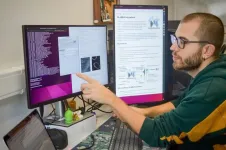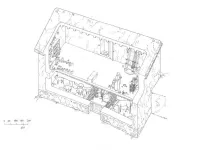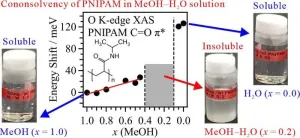(Press-News.org) University of Virginia researchers are developing a flexible online tool for navigating information used in the fight to save children from deadly diarrheal diseases by identifying transmission hotspots and accelerating the deployment of treatments and new vaccines.
Diarrhea not only kills hundreds of thousands of children around the world every year, it contributes to malnutrition that can prevent kids from growing and developing to their full potential both physically and mentally, trapping them in poverty. While significant progress has been made against the disease in recent years, the UVA researchers say that the modern era of “big data” offers a vast untapped opportunity to respond more nimbly and help more children.
Their Planetary Child Health & Enterics Observatory (Plan-EO) is bringing together the expertise of epidemiologists, climatologists, bioinformaticians and hydrologists (water supply experts) to provide an unprecedented, big-picture view of diarrhea around the world. The information and predictions that these experts come up with, will be hosted in a map-based online portal, giving infectious disease experts and local leaders in low- and middle-income countries the information they need to make smart decisions, prioritize resources and move quickly to save lives.
“Diarrhea is very much the great unmentionable public health threat, often ignored or seen as an unavoidable experience of childhood. We want to change that,” said epidemiologist Josh M. Colston, PhD, an assistant professor in the UVA School of Medicine’s Division of Infectious Diseases and International Health, who is leading the initiative. “As patterns of infectious diarrheal diseases shift due to climate change, we want the public health community to be ready and have all the most up-to-date epidemiological estimates and predictions at their fingertips.”
Addressing Childhood Diarrhea
To build out the new online dashboard, Colston is collaborating with experts in UVA’s School of Engineering, School of Data Science and Biocomplexity Institute, as well as colleagues at Johns Hopkins University. They are taking a multidisciplinary approach to a complex problem, seeking to capitalize on a vast array of expertise and build on longstanding relationships with collaborators overseas.
The researchers say that as climate change accelerates, the need to track diarrhea’s spread is only increasing. Flooding, for example, can help spread dozens of bacteria, viruses and parasites that cause diarrhea, worsening the situation in areas already reeling from the effects of the weather. That’s why it’s important for UVA’s project to include hydrologists, climatologists and experts in areas that go beyond infectious disease, the researchers say.
“Awareness is really growing that diseases have multi-faceted risk factors that encompass environmental, social and behavioral elements. We saw that with the pandemic, and we certainly see it with diarrheal diseases. That’s why a collaborative approach is crucial,” said Margaret Kosek, MD, professor of medicine and an infectious-diseases clinician. “We’re fortunate here at UVA to have experts in all these aspects all on the same Grounds, as well as the support to bring them together.”
Vital Data at a Glance
The new online dashboard, now under construction, will be updated continually to provide the latest data on pathogen dynamics, akin to John Hopkins’ invaluable COVID-19 dashboard during that pandemic. Visitors to the Plan-EO site will be directed to a world map-based interface where they can select data on specific diarrhea-causing pathogens, such as E. coli or Shigella bacteria.
The dashboard will allow researchers and leaders to understand the magnitude of the disease burden and predict the potential implications for the children living in endemic areas. It will also allow infectious disease experts and local leaders to coordinate the best strategies for responding to and containing the outbreaks, ultimately saving lives.
“Let’s say you’re an epidemiologist in Africa or South Asia and you’re interested in a specific community in a particular country to carry out a water-improvement project or vaccine trial,” said Venkat Lakshmi, hydrologist and John L Newcomb Professor of Engineering in Civil and Environmental Engineering. “Using the Plan-EO interface, you’ll be able to navigate to that location on a map and get robust predictions of the prevalence of particular pathogens, as well as published information on studies that have been carried out in the surrounding areas. It’ll be a gamechanger.”
The researchers plan to launch the dashboard later this year, with assistance from capstone students at the UVA School of Data Science.
Findings Published
The researchers have described their ambitious project in the scientific journal PLOS One. The research team consists of Colston, Bin Fang, Eric Houpt, Pavel Chernyavskiy, Samarth Swarup, Lauren M. Gardner, Malena K. Nong, Hamada S. Badr, Benjamin F. Zaitchik, Lakshmi and Kosek. The researchers have no financial interest in the project.
The work is being supported by the National Institutes of Health’s National Institute of Allergy and Infectious Diseases, grants 1K01AI168493-01A1 and 1R03AI151564-01; the National Science Foundation, Expeditions in Computing grant CCF-1918656; NASA’s Group on Earth Observations Work Programme, grant 16-GEO16-0047; and UVA’s Engineering in Medicine program, Department of Internal Medicine and Division of Infectious Diseases and International Health. Additional funding was provided by the Bill & Melinda Gates Foundation, grant OPP1066146.
To keep up with the latest medical research news from UVA, subscribe to the Making of Medicine blog.
END
Online dashboard to help save children from dangerous diarrheal diseases
2024-05-17
ELSE PRESS RELEASES FROM THIS DATE:
Anti-diabetic treatment associated with reduced risk of developing blood cancer
2024-05-17
(WASHINGTON, May 17, 2024) – People who use metformin are less likely to develop a myeloproliferative neoplasm (MPN) over time, indicating that the treatment may help prevent the development of certain types of cancers, according to a study published in Blood Advances.
Metformin is a therapy used to treat high blood sugar in people with type 2 diabetes that increases the effect of insulin, reduces how much glucose is released from the liver and helps the body absorb glucose. A meta-analysis of previous studies connected the therapy with ...
Pickleball courts in a legal pickle #ASA186
2024-05-17
OTTAWA, Ontario, May 17, 2024 – Pickleball Legal Consultant is a job title that likely did not exist a decade ago, but as pickleball courts infiltrate neighborhoods to satiate an appetite for a sport whose namesake is a snack, communities take issue with the resulting influx of noise. Now homeowners’ associations and city councils face litigation by those whose lives are disrupted by pickleball’s din.
Charles Leahy, an attorney, retired mechanical engineer, and former HOA board member became ...
Ancient arachnid from coal forests of America stands out for its spiny legs
2024-05-17
LAWRENCE — More than 300 million years ago, all sorts of arachnids crawled around the Carboniferous coal forests of North America and Europe. These included familiar ones we’d recognize, such as spiders, harvestmen and scorpions — as well exotic animals that now occur in warmer regions like whip spiders and whip scorpions.
But there were also quite bizarre arachnids in these habitats belonging to now extinct groups. Even among these stranger species now lost to time, one might have stood out for its up-armored legs.
The ancient critter recently was described in a new paper published ...
Model disgorgement: the key to fixing AI bias and copyright infringement?
2024-05-17
By Ian Scheffler
By now, the challenges posed by generative AI are no secret. Models like OpenAI’s ChatGPT, Anthropic’s Claude and Meta’s Llama have been known to “hallucinate,” inventing potentially misleading responses, as well as divulge sensitive information, like copyrighted materials.
One potential solution to some of these issues is “model disgorgement,” a set of techniques that force models to purge themselves of content that leads to copyright infringement or biased responses.
In ...
Researchers develop “game-changing” blood test for stroke detection
2024-05-17
Stroke is the leading cause of disability worldwide and the second leading cause of death, but the right early intervention can prevent severe consequences. A new study led by investigators from Brigham and Women’s Hospital, a founding member of the Mass General Brigham healthcare system, and collaborators developed a new test by combining blood-based biomarkers with a clinical score to identify patients experiencing large vessel occlusion (LVO) stroke with high accuracy. Their results are published in the journal Stroke: Vascular and Interventional Neurology.
“We have developed a game-changing, accessible tool that could help ensure that more people suffering from ...
New guideline: Barrett’s esophagus can precede esophageal cancer, but not all patients need a procedure to remove abnormal cells
2024-05-17
Bethesda, MD (May 17, 2024) — The American Gastroenterological Association’s (AGA) new evidence-based Clinical Practice Guideline on Endoscopic Eradication Therapy of Barrett's Esophagus and Related Neoplasia, published today in Gastroenterology, establishes updated guidance for Barrett’s esophagus patients.
A precursor to esophageal cancer, Barrett’s esophagus is a condition in which the cells in the esophagus have been replaced with non-cancerous abnormal cells. These cells can progress to a condition called dysplasia, which may in turn become cancer. Dysplasia is considered low-grade or ...
Researchers in Portugal develop an image analysis AI platform to boost worldwide research
2024-05-17
A team of researchers from the Instituto Gulbenkian de Ciência (IGC) in Portugal, together with Åbo Akademi University in Finland, the AI4Life consortium, and other collaborators, have developed an innovative open-source platform called DL4MicEverywhere published today in the journal Nature Methods*. This platform provides life scientists with easy access to advanced artificial intelligence (AI) for the analysis of microscopy images. Itenables other researchers, ...
A devastating fire 2,200 years ago preserved a moment of life and war in Iron Age Spain — right down to a single gold earring
2024-05-17
A ruined building in the middle of the Pyrenees records a tragedy for the people who lived there — a devastating fire which burned a settlement to the ground, destroying everything down to a hidden gold earring. Now archaeologists’ excavation of Building G, in the strategically placed Iron Age site of Tossal de Baltarga, reveals a way of life derailed by violence: potentially, a forgotten episode of the war between Carthage and Rome.
“The destruction was dated around the end of the third century BCE, the moment where the Pyrenees were involved in the Second Punic War and the passage of Hannibal’s troops,” ...
Exploration of polymer cononsolvency mechanism through soft X-ray absorption spectroscopy
2024-05-17
This study investigates the cononsolvency mechanism of poly(N-isopropylacrylamide) (PNIPAM), which is soluble in pure methanol (MeOH) and water but insoluble in aqueous MeOH solutions. Combining oxygen K-edge X-ray absorption spectroscopy (XAS) with theoretical calculations executed in molecular dynamics (MD) simulations and inner-shell calculations, it was found that hydrophobic interactions between PNIPAM and MeOH clusters play a key role in PNIPAM aggregation and cononsolvency emergence.
PNIPAM is ...
Researchers use machine-learning modeling tools to improve zinc-finger nuclease editing technology
2024-05-17
Genome editing is making inroads into biomedical research and medicine. By employing biomolecule modeling tools, a Japanese research team is accelerating the pace and cutting the cost of zinc finger nuclease (ZFN) technology, a primary gene editing tool.
In a recently published study, researchers from Hiroshima University and the Japanese National Institute of Advanced Industrial Science and Technology demonstrated how machine learning-driven modular assembly systems can improve gene editing.
The study was published on April 10 in the journal Advanced Science.
“Genome editing is ...






